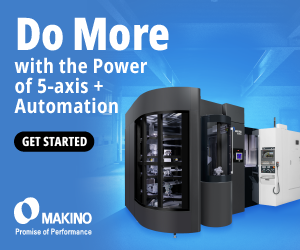Insurance reps, safety consultants and other interested parties routinely tell machine shops and part manufacturers a workplace accident is inevitable. Unfortunately, they’re usually correct.
After being in business for nearly 50 years, our company’s safety record is very good despite the statistical reality. But we’ve still had incidents and close calls. Most recently, we experienced our shop’s first fire. Thankfully, it wasn’t a major disaster and didn’t cause any injuries. Nonetheless, it was an eye-opener that made me realize how a great safety record is no reason to assume it’s going to stay that way.
When an incident like a fire happens, expect the unexpected. A dangerous incident comes as a surprise and can quickly get out of hand.
In our situation, a piece of hot metal landed in a parts cleaning sink containing a flammable cleaning solution. After a few seconds, a flash fire erupted and quickly went up a wall and outside a large bay door. It was a hot, dangerous and scary situation. Luckily, it occurred on a weekend with minimal activity.
After a few minutes, the fire was extinguished by the maintenance employee who caused it. Fortunately, the damage was repairable without the need for an insurance claim, and we were lucky it wasn’t worse.
To get to the bottom of the situation, I interviewed the employee responsible, found him to be negligent and terminated him. Firing him wasn’t pleasant, but it was the best decision under the circumstances. He was in violation of shop rule No. 1: don’t be on the premises working alone. He was supposed to have left, but stayed behind and violated another important rule: don’t work on a personal project without permission.
While his version of the event was generally accurate, the tool that proved most valuable in determining what took place was the security camera that recorded the event. Our facility is not overrun with security cameras and they don’t cover every inch of the shop, but the entire event was recorded. Watching the video of this incident revealed much more than the employee interview. Had I been forced to rely completely on his account, I wouldn’t have known about his actions leading to the fire or understood the magnitude of the heat and flames that suddenly shot up in the air. Reviewing the video also forced him to admit he was welding and grinding on a personal project, which he was obviously reluctant to admit beforehand.
I could also see fire department personnel in the video inspecting the aftermath and making notes. Our facility complies with local fire codes, so they didn’t issue a citation. But, the video confirmed how long the fire department was on-site, as well as the amount of cleaning required to get everything back together.
The cameras answered these questions and offered a benefit I didn’t consider when they were installed. The cameras weren’t intended to monitor employees, but to primarily be a tool that increases security inside and outside the facility. They’ve fulfilled that purpose.
The surprise and shock of what transpired created a situation in which the employee who caused the fire didn’t have time to consider the effects of the camera, but it clarified the entire sequence of events. Ironically, that employee also helped install the cameras. He’s a talented individual who will learn from this experience. Thankfully he’s alive to do so.
Related Glossary Terms
- flash
flash
Thin web or film of metal on a casting that occurs at die partings and around air vents and movable cores. This excess metal is due to necessary working and operating clearances in a die. Flash also is the excess material squeezed out of the cavity as a compression mold closes or as pressure is applied to the cavity.
- grinding
grinding
Machining operation in which material is removed from the workpiece by a powered abrasive wheel, stone, belt, paste, sheet, compound, slurry, etc. Takes various forms: surface grinding (creates flat and/or squared surfaces); cylindrical grinding (for external cylindrical and tapered shapes, fillets, undercuts, etc.); centerless grinding; chamfering; thread and form grinding; tool and cutter grinding; offhand grinding; lapping and polishing (grinding with extremely fine grits to create ultrasmooth surfaces); honing; and disc grinding.




